Share
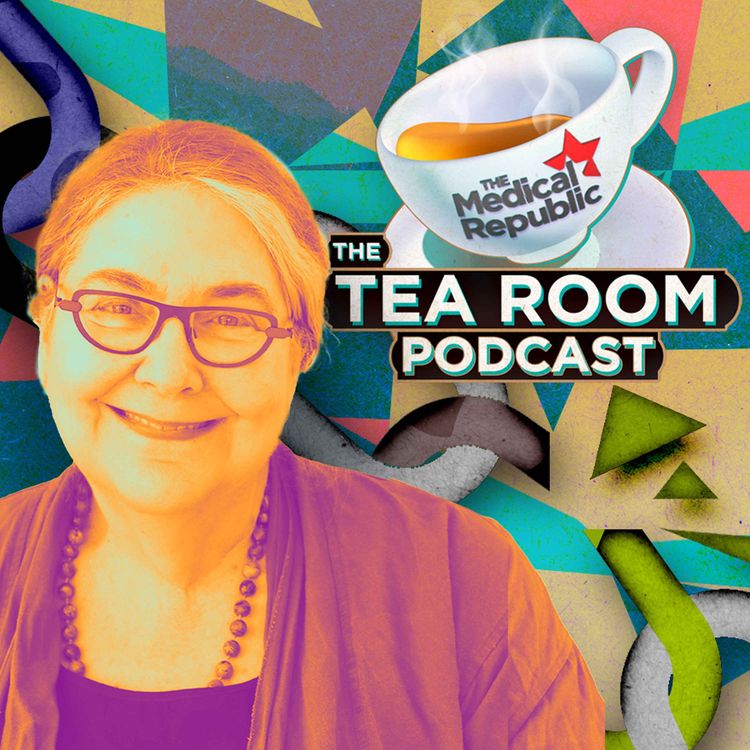
The Tea Room
Doctors detect slavery and prevent forced marriage
Modern day slavery has many guises. Forced marriage, debt bondage in a suburban family restaurant, domestic and sexual slavery are but a few.
According to Professor Jennifer Burn, this week’s guest, we’re kidding ourselves if we think this is not happening in Australia.
“It was estimated there were 15,000 people living in slavery in Australia in 2016. And the Australian Institute of Criminology, estimates that for every single person identified, there are four who are under undetected,” she says.
Professor Burn was the Interim Anti-Slavery Commissioner for NSW from 2018 to 2020 and is the director of Anti-Slavery Australia at University of Technology Sydney. She says doctors are well placed to identify slavery risks because they are used to assessing complex situations.
She shares a story about how a GP helped prevent a forced marriage when a young woman was brought to a clinic with a family member who wanted to supervise the consultation.
“The doctor had a very fine antenna and thought that there might be something that the young person wanted to disclose. The doctor found a way to interview the young woman by themselves and the young person said that she was terrified that she was going to be taken overseas for marriage. She had overheard conversations on the phone. She knew that documents had been prepared,” Professor Burn said.
Doctors now have a guide for patients who are at risk of forced marriage and other types of slavery.
“The frontline workers guide is terrific because it's got a list of indicators, a list of the effects of forced marriage, referral information and it's readily accessible,” Professor Burn says.
More episodes
View all episodes

148. Should women be warned on breast density?
30:51||Season 5, Ep. 148There’s been a swell of advocacy lately around breast density, which increases cancer risk while reducing the sensitivity of mammograms. The FDA in the US has recently mandated that women be notified by mammogram providers if they have dense breasts, giving them the opportunity to arrange supplemental testing. But BreastScreen Australia’s 2020 position statement does not recommend the routine recording of breast density or the provision of supplemental testing for women with dense breasts. Professor Vivienne Milch, the government’s medical advisor on screening policy, and Professor Bruce Mann, a breast surgeon and researcher, are two of our guests today in the Tea Room – the last Tea Room before we become The Medical Republic Podcast and go from weekly to fortnightly episodes. We also talk to two patients about their experiences with breast density and cancer, who find the lack of notification baffling – and a little bit 1950s. Dr Sandy Minck, a GP by training and a breast cancer survivor, said she was “dumbfounded” by the BSA position statement. “As a consumer I'm outraged. As a health professional, I'm dumbfounded. I just don't understand it.” Professor Milch says the program will conduct an evidence review on supplemental screening for women with dense breasts some time this year, although there is no guarantee of a policy change. “We're aware of the growing momentum of advocacy and of also some women's desire to know their breast density,” Professor Milch says, adding that different states have different policies. “Western Australia has been telling women about their breast density for some time, and then there are pilots in some services in [Queensland and South Australia]. “We may or may not have a policy change. But we'll be looking at the evidence.” Professor Bruce Mann, who works with the Roadmap to Optimising Screening in Australia (ROSA) project, says there is enough evidence to justify a change to BSA’s screening regimen. “As women and the community becomes more informed, there is a danger that what is offered by BreastScreen will be seen as insufficient,” he said, which will lead to women opting out of BreastScreen and going private. “What we don't want in this country is a two-tiered system where those who know and can get the best, do, and everyone else gets what's offered to them. That's what we are working to avoid. “If you can show that by doing something different you are finding more cancers, fewer cancers are being diagnosed between screening rounds, and the stage, the size and the nodal status of cancers that are diagnosed is moving in a favourable direction, I believe that's sufficient to encourage implementation with a planned review in 10 years when the mortality information's there.”
147. Long covid pathways keep GPs close in SA
22:59||Season 5, Ep. 147South Australia’s long covid clinic loves GPs and keeps them close.Dr Angela Molga is a clinical pharmacologist and geriatrician at the long covid clinic at Royal Adelaide Hospital.“We engage the GPs very early on, from the moment we receive the referrals. The patients are kept updated on the length of the waitlist and we also send them out resources specifically around self-rehabilitation,” she says.Dr Molga says the average age of the patients who were seen in the South Australian clinic last year was 47 years old.“These were previously healthy people. Little contact with the healthcare system, but now have multiple chronic issues. They have to change their lifestyle significantly, and then this also impacts their mental health,” she says.Also on The Tea Room medical reporter Cate Swannell shares the nitty gritty details of the long covid parliamentary inquiry report.Although long covid fails to get a mention in the federal budget Cate says the long covid parliamentary inquiry is pushing for $50 million. She says the RACGP has welcomed the recognition of GPs in the report.“They also have pointed out that many recommendations reflect what the RACGP has been calling for, for a long time. Particularly around data collection and research,” Cate says.Cate says the report seemed to hinge on the establishment of a national Centre for Disease Control which we saw confirmed in this week’s federal budget.“They're also talking about expanding the list of eligibility for antivirals and there is a call for the establishment of a multidisciplinary advisory body to oversee the impact of poor air quality and ventilation on the economy,” Cate says.Join The Medical Republic at an interactive live webinar that will equip you with the knowledge and tools to treat long covid patients.Ask questions about including diagnostics and assessment, guidelines, billing and item numbers, and how to create a long covid clinic in a community practice.The expert panel include doctors treating long covid in family practices, leaders of tertiary care teams, clinical researchers and public health specialists.
146. Putting the ally into allied health
16:10||Season 5, Ep. 146What do you get when you cross advice from a health economist with that from a leading physiotherapist? Increased revenue and a better patient experience, say our guests on today’s episode of The Tea Room.Scott Willis is president of the Australian Physiotherapists Association and a proud Palawa man. He says better results come from general practices who genuinely embrace allied health as part of the team.“If you have social events, invite them. Let them be part of your strategy of the practice. They might sometimes see things from a different angle and add value to where practice is heading,” he says.Mr Willis also says the business relationship amplifies when it wraps around the needs of the patients.“The number one thing is that both parties – GPs and allied health - believe that it's a partnership to make the patient journey better. I know it's a business transaction in terms of hiring a space or having some type of input within general practice, but it has to be viewed as more than that,” he saysTracey Johnson, health economist and CEO of Inala Primary Care, also favours multidisciplinary team care for patients. She also has a robust economic rationale for engaging allied health within a general practice.“Given the rents that people are now paying in this sector, it will be incredibly hard for you to survive if you don't have onsite allied health or pathology or pharmacy that you are subleasing to,” she said.Ms Johnson says that many doctors work part time and that hot-desking their rooms makes perfect economic sense.“Some doctors might work from 8:00am in the morning until 2:30pm and pick their children up from school. So, bring in some allied health who might to use those rooms from 3:00pm until 7:00pm. You get more utilization around those rooms, more marginal return, and generally things come together better for the patients as well,” she says.For more tips on how to optimise your allied health arrangements listen to the full episode.News flash: The Tea Room podcast is moving! In a few weeks we will stop being The Tea Room and broadcast instead as The Medical Republic podcast.Today’s episode is already available on The Medical Republic podcast and can be found on Apple Podcasts, Spotify or your favourite podcast player. Subscribe now so you won’t miss out on any new episodes.
145. Capitalism, but not as we know it
23:01||Season 5, Ep. 145Professor Rob Moodie describes himself as “an eternal optimist”. He needs to be. A long and distinguished career in public health has seen Professor Moodie tackle the “big four” industries – alcohol, tobacco, junk food, and fossil fuel – and these days he’s added a fifth to the list, gambling. Those industries and corporate multinationals make up a large slice, but by no means all, of the commercial determinants of health – defined by Professor Moodie and his colleagues as “the products and practices of some commercial actors—notably the largest transnational corporations—[that are] responsible for escalating rates of avoidable ill health, planetary damage, and social and health inequity”. In a recent series in the Lancet, Professor Moodie, Professor Anna Gilmore from the University of Bath in the UK and other colleagues set out to define, conceptualise and frame an argument for paying attention to the commercial determinants of health and rebalancing the distribution of the profits of capitalism. Are Professor Moodie and his colleagues talking about the overthrow of capitalism? “We’re talking about a much more responsible form of capitalism,” he tells TMR. “[At the moment] these corporations, don’t pay the costs of their production and their consumption. Individuals and states pay the costs. And that means that money can't be spent on other things like education or other forms of healthcare. “They can completely externalise all the negatives, and they leave it for the rest of the society to pick up, literally what they’ve left behind. And that makes them more powerful.” Doing nothing to correct the balance of power between corporations and society could be catastrophic, says Professor Moodie. “We've grown up with an expectation, literally, that life expectancy will continue to increase, that our lives will get longer and better as we go grow older and that we'll have a happier society,” he said. “That notion of a fair go was built into our ethos, but it’s been disappearing over the last 15 to 20 years. “We've watched all these indexes that are going the wrong way, whether it's around childhood education, childhood development, sustainability, biodiversity, press freedom, peace index, quality of life index, quality of death index – in Australia we used to be really up there. “This has been worn away.” We need a shift in our mindset and where we look for inspiration, says Professor Moodie. “We could go to the wrong place,” he said. “The US is not a place to go for overall policy inspiration. We need to look to northern Europe or Scandinavia, where there's a commitment to the society as a whole, and what that produces. “The greater the equality, the better the health, and there's a dictum that says if you want to live the American dream, go to Denmark.”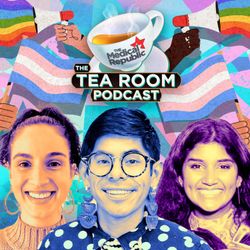
144. Mini masterclass - treating LGBTQI+ patients
21:07||Season 5, Ep. 144Medical school equips doctors to do many things. Managing LGBTQI+ patients probably isn’t one of them.Dr Asiel Adan Sanchez is a GP and clinical tutor at the university of Melbourne. He knows first-hand how clinical environments can be off putting for people who are queer, trans and gender diverse. He’s also created a solution for that called Wavelength - a learning tool that builds clinician skills and makes general practices safer for LGBTQI+ folk.Dr Sanchez gives a quick masterclass on the simple and practical ways to take away the “awkward interactions” that occur in many medical environments. They say a very common example is when taking a sensitive history and asking about gender affirmation procedures.“A lot of clinicians really struggle with asking those questions and often the language that they use is quite inappropriate. “ Have you had the operation?” for example. A patient might get this question all the time outside, in the real world, and if you don't explain to the patient what the rationale behind asking those questions is, it can be really distressing for them,” says Dr Sanchez.Dr Sanchez provides a graduated approach to inquiring about gender affirmation surgery, after building rapport through simple ways such as using correct personal pronouns.“I often tell medical students to fall back on the skills that they already have around cultural competency to build that rapport with the person. For example, you might be talking about work and family and what the patient does at home. Then you can ask “By the way, are there any pronouns that you'd like me to use?” And that's an organic and simple approach,” they say.Dr Sanchez created the Wavelength training module in 2016 when he was a medical student at University of Melbourne. Wavelength is now managed by the Australian Medical Student Association (AMSA) who are advocating for Australian medical school curricula to include better LGBTQI+ health content.Medical student Sophia Nicolades has researched the LGBTQI+ health curricula gap and found that the average hours of dedicated teaching was between zero and two hours across the medical whole degree.“We found that the groups with the poorest health care outcomes were also the least present in our curriculars those being trans people, intersex people, bisexual people. and those with intersectional experiences such as First Nations people and folks with disability,” Mx Nicolades said.Dineli Kalansuria, medical student and chair of AMSA Queer, is also working tirelessly to try and better the medical curriculum at Australian universities.“We would also love for some practising doctors to take part in the Wavelength module and let us know if they feel that it's relevant, if it's representative of the presentations that they've been seeing as well,” she said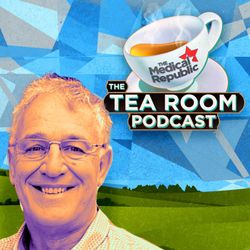
143. The bush medicine secret to better business
13:37||Season 5, Ep. 143Struggling to hang on to doctor staff? This episode offers more than a few gems of wisdom from the most unlikely location. Today, The Tea Room travels to Crystal Brook, a rural town 200 kilometres north of Adelaide. There we meet Dr Richard McKinnon co- owner of Crystal Brook Medical Practice – a small-town clinic that is anything but small. After 35 years in this farming community, he knows the hacks to running a thriving practice that allows plenty of time to play golf. The secret, it appears, is knowing how to retain registrars. “The current generation, quite rightly and no criticism at all, won't go to single-doctor practices, they won't go to two doctor practices and they probably won't go to three doctor practices. Because it's all about work life, balance and lifestyle,” Dr McKinnon says. At Crystal Brook Medical Practice registrars are “really looked after”, says Dr McKinnon. “They don't do any more on-call than I do. They're very well supported. And if they want to go and play netball in winter and they're on call, I'll cover them and they'll cover me when I want to go sailing. And the ones we like and who like us tend to stay,” he said. Providing great training is another major drawcard for registrars. At Crystal Brook they get hands-on experience assessing and treating conditions, like gout and polymyalgia rheumatica, which in a city clinic would be normally referred to another specialist. “I think rural GPs will do more procedures perhaps than our city colleagues because you don't want the patient have to travel 200 kilometres for treatment. And if you're not kind of putting patients at increased risk then we will do those treatments and try to encourage and teach the registrars coming through,” he said. Dr McKinnon sees an over reliance on “sophisticated investigations” in current training approaches in large hospitals. He believes this can compromise clinical acumen and the confidence to diagnose and treat some patients. “You go to Medical School, in my case for six years of medicine, then four years post-graduate. Basically you've done 10 years training. If you then don't use your clinical acumen, well, it just breaks my heart,” Dr McKinnon said.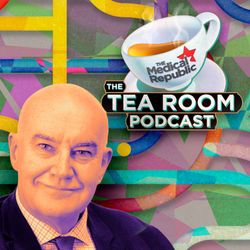
142. The man who built the TGA
17:24||Season 5, Ep. 142When Professor John Skerritt first joined the Department of Health he was tasked with setting up a joint regulatory framework between Australia and Aotearoa New Zealand. “But then the government changed, and it was no, no, we don’t want to do that,” he told TMR in an exclusive podcast. Instead, Professor Skerritt set about making the biggest regulatory reforms “in 30 to 50 years” via the establishment of the current Therapeutic Goods Administration. “We had to get on top of such issues as the use of strong opioids and so forth, things that were really important for patient safety and also a number of medical device reforms – gynaecological mesh, and hip joints,” he said. “And just when the 70-hour weeks went back to 50-hour weeks a little thing called covid came along.” That “little thing” turned into a response effort of which Professor Skerritt is justifiably proud. “The whole staff pulled together and really went beyond the pale,” he said. “There was such a sense of mission. Most people were working from home, but we were essential workers. Many of us were working in here, coming in through a ghost town. The laboratory people had to come in – they couldn't take their stuff and do it in the kitchen at home. “They were here at all crazy hours, working damn hard. That has to be the crowning achievement.” Along the way there have been moments of controversy, of course, but Professor Skerritt doesn’t shy away from them. Not the least of them is what will occupy him in his last few weeks in the job – the nicotine vaping regulatory framework. “One of the biggest holes emerged because the previous government brought in controls on the border and then repealed it four or five days later,” says Professor Skerritt. “In the absence of requiring input permits, pallet-loads of this stuff comes in without requirement for permits, ends up distributed to 7-Elevens and online sales and all sorts of things. “Government has got to make a policy decision about whether they want to do something at the border. “I'm not going to pre-empt any decisions of government, because those final decisions are still being discussed among Cabinet members. “People [think] we make up the rules – we don't. Our role is to identify what options could be feasible in law and in practice, the range of options out there, get feedback, and put it up to ministers. Sometimes they're really big things like nicotine vaping, and it will involve all of Cabinet not just the health minister. “When we implement what is decided, that's the separation between the bureaucracy and the elected government. And that's the way it should be in a democracy.”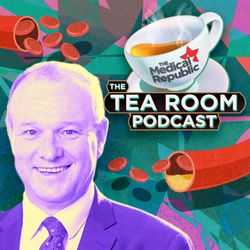
141. The future of cholesterol control
17:43||Season 5, Ep. 141Treatment options are expanding rapidly for high cholesterol patients, says today's guest on The Tea Room. Professor Steve Nicholls, director of the new Victorian Heart Hospital, shares the latest in clinical trials and reveals a possible heart disease vaccine. “There's an approach now, in clinical trials, that uses fairly old-fashioned vaccine technology but instead of trying to go after some antimicrobial target, the vaccine is simply targeting (a cholesterol-inducing protein) PCSK9,” he says. He says that research advances are coming at cholesterol treatment from all angles. There are novel ways to tackle lipoprotein(a) and triglycerides, a new approach to high-density lipoproteins, and other injectables and oral agents that by themselves, or in combination with other therapies, will lower LDL cholesterol by 50%. “And then at the very end of all of this is gene editing and the idea that we may be able to have once-in-a-lifetime treatment for cholesterol. All of these approaches are now real and are undergoing clinical development,” Professor Nicholls says. Professor Nicholls also discusses the nocebo effect of stains and says that half of the patients who are prescribed stains will stop taking the drug within 12 to 18 months. “We know that statin intolerance is a really big deal,” he says adding that there is new hope for those patients. “We've just reported a really large clinical trial of a new agent called bempedoic acid, and that not only lowered cholesterol, but lowered the risk of heart attack, stroke, and death,” he says. Professor Nicholls also analyses the pros and cons of the Victorian Heart Hospital that his team opened four weeks ago. “It’s been great to watch individual medical departments working together to think differently about the way we treat multi-system disease and provide great care for that. To watch that start to come to life is pretty exciting,” he says.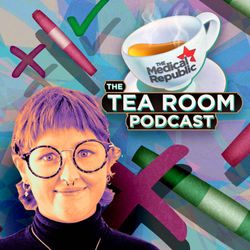
140. Weight loss wonder, payroll tax and the CTE class action
15:57||Season 5, Ep. 140It’s only March and politics already has a full dance card for GPs to foxtrot around. Luckily for The Tea Room, political reporter Holly Payne steps in today to lead us through the top stories of the year so far. First up, Holly spills the tea on her investigations into Ozempic and the marketing antics of manufacturer Novo Nordisk. Holly says the big pharma has now been suspended from a leading UK industry group for promotional misdemeanours. “Novo Nordis partly funded an event that promoted one of their semaglutide drugs but they did not mention any side effects of the drug. They’ve also sponsored the creation of weight loss medicine units (of curricula) for medical students,” Holly says. Massive demand for weight loss treatment has led to supply shortages in Australia but according to Holly’s sources this probably won’t improve until mid-year. Meanwhile, the dilemma continues as to who is most entitled to the weight loss/diabetes drug. Holly also delves into the payroll tax verdict and what the judges said in the Thomas and Naaz case. She contacted each state and territory to check for differences and reveals that Queensland is offering clinic owners an amnesty till 2025. However, Holly says that Western Australia is the premium state of choice for GPs who want to preserve their thin profit margin. “Western Australia is the fun outlier in that it's not part of the harmonized tax provisions. When I've corresponded with the WA tax office, they've basically said, “Thomas and Naaz doesn't apply here and we consider all GPs as contractors until otherwise”,” Holly said. Chronic traumatic encephalopathy (CTE) also takes the centre field in our political update, as Holly discusses a class action lawsuit against the AFL. She said that while the RACGP is calling for a change to codes none of the peak Australian sports medicine bodies have officially acknowledged the link between sports-related head knocks and CTE "They did indicate that they would likely be updating their position on CTE but there's no guarantee of when that will actually come out. It’s often thought that the sports medicine bodies are particularly quite close to industry,” Holly said. As players and sporting institutions battle it out Holly suggests this is one game to watch. Who eventually gets the red card may have an expensive bill. “We've already seen a class action happen in America with gridiron. Those players won a $1 billion payout,” Holly said.